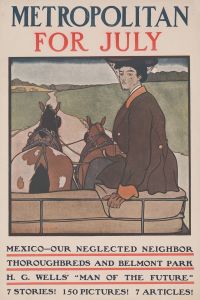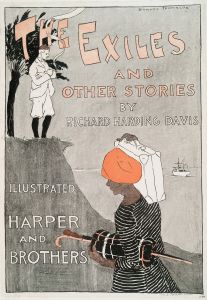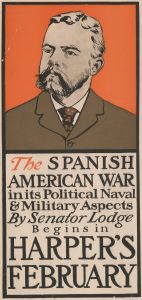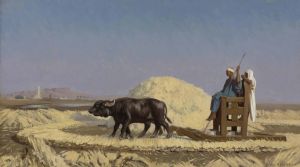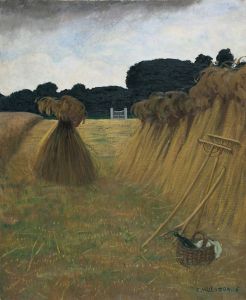
Collier’s October 3rd, 1903, Harvesting Wheat in The West
A hand-painted replica of Edward Penfield’s masterpiece Collier’s October 3rd, 1903, Harvesting Wheat in The West, meticulously crafted by professional artists to capture the true essence of the original. Each piece is created with museum-quality canvas and rare mineral pigments, carefully painted by experienced artists with delicate brushstrokes and rich, layered colors to perfectly recreate the texture of the original artwork. Unlike machine-printed reproductions, this hand-painted version brings the painting to life, infused with the artist’s emotions and skill in every stroke. Whether for personal collection or home decoration, it instantly elevates the artistic atmosphere of any space.
Edward Penfield's illustration "Harvesting Wheat in The West," featured on the cover of Collier’s magazine on October 3, 1903, is a notable example of early 20th-century American illustration. Penfield, a prominent figure in the world of graphic design and illustration, was known for his distinctive style that often combined bold outlines with flat areas of color, a technique that was both eye-catching and effective for magazine covers.
The illustration captures a scene of wheat harvesting, a significant and symbolic activity in the American West during this period. The early 1900s were a time of agricultural expansion in the United States, with wheat being one of the primary crops that fueled the country's growth. The depiction of wheat harvesting in the West not only reflects the agricultural practices of the time but also highlights the importance of farming to the American economy and way of life.
Penfield's work often celebrated American themes and values, and this illustration is no exception. It showcases the industrious spirit of the American farmer and the vast, open landscapes of the West, which were central to the nation's identity. The image likely resonated with contemporary audiences who were familiar with the challenges and rewards of agricultural life.
The cover of Collier’s magazine served as a platform for artists like Penfield to reach a wide audience, as the publication was one of the most popular periodicals of its time. Collier’s was known for its investigative journalism and fiction, but its covers were also a significant draw, often featuring works by leading illustrators of the day. Penfield's contribution to the October 3, 1903, issue would have been part of this tradition, offering readers a visually appealing entry point into the magazine's content.
Edward Penfield's influence extended beyond magazine covers; he is often credited with helping to define the visual language of American illustration in the late 19th and early 20th centuries. His work bridged the gap between fine art and commercial art, and he played a key role in elevating the status of illustration as a respected art form. Penfield's style, characterized by its clarity and simplicity, was well-suited to the needs of mass publication, where images needed to be both striking and easily reproducible.
In summary, "Harvesting Wheat in The West" by Edward Penfield is a significant piece of American illustration that reflects the agricultural themes and values of its time. It exemplifies Penfield's skill as an illustrator and his ability to capture the essence of American life in the early 20th century. The artwork not only served as an attractive cover for Collier’s magazine but also contributed to the broader cultural narrative of the American West and its role in the nation's development.





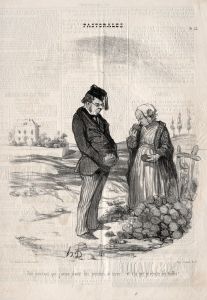
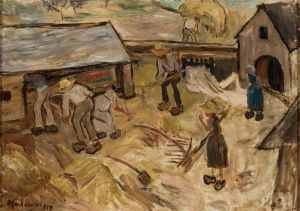
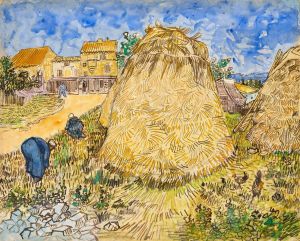
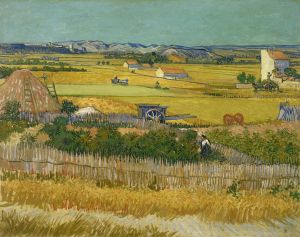
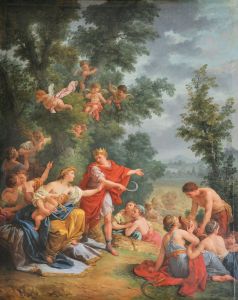
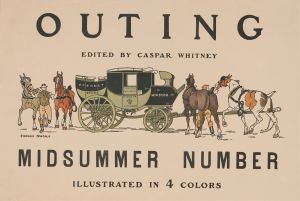
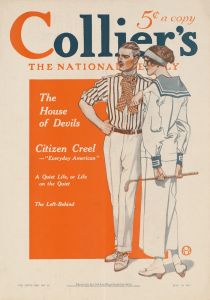
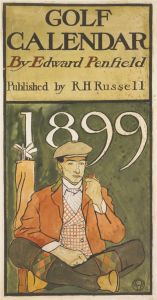
![Harper’s [for] April](/imgs/252614/s/edward-penfield-harpers-for-april-4582d088.jpg)
